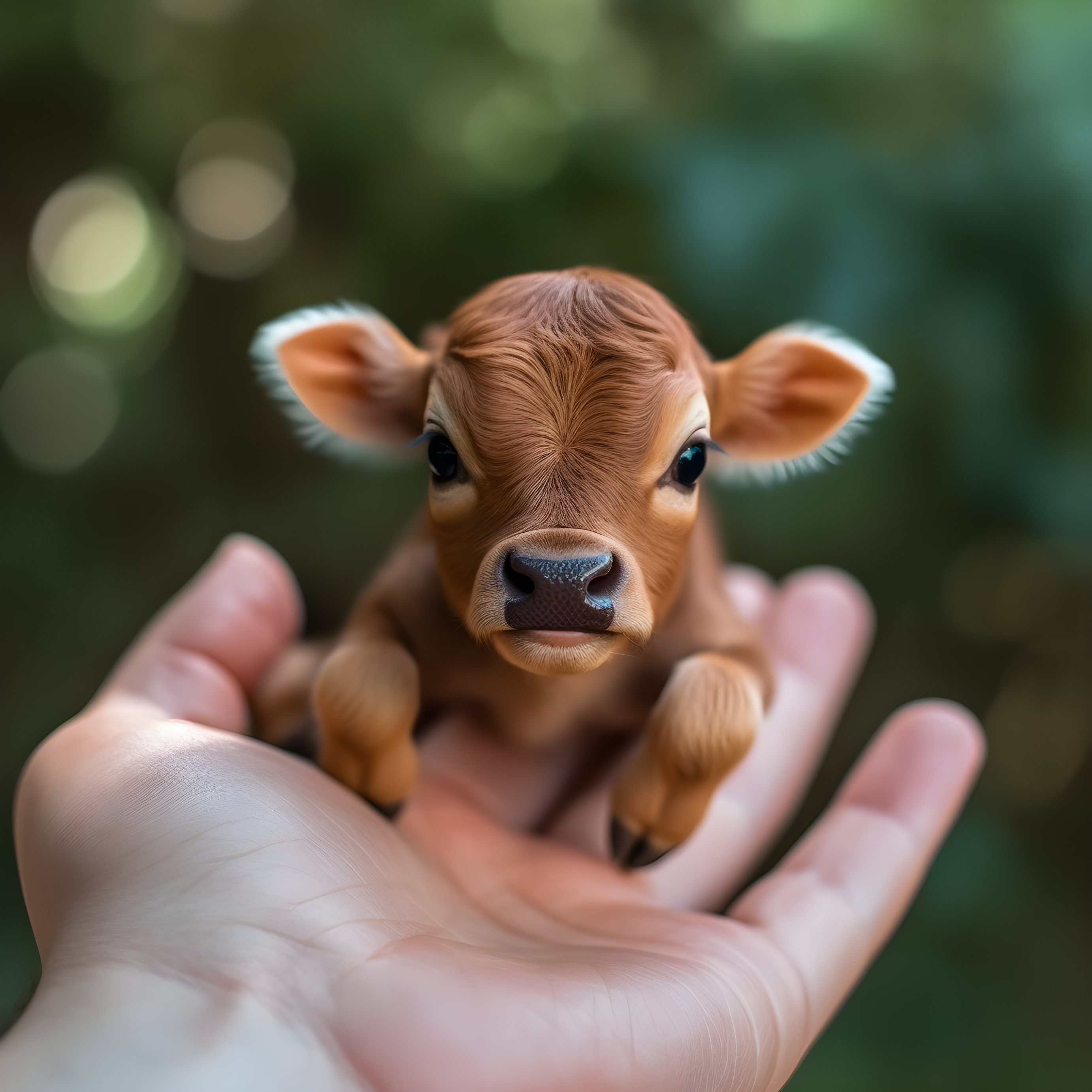
The Enchanting World of Baby Cows: A Comprehensive Guide
Introduction
The arrival of a baby cow, also known as a calf, is a heartwarming and momentous occasion on any farm. These adorable creatures, with their big, curious eyes and playful antics, instantly capture hearts and bring joy to their surroundings. Baby cows are a vital part of the agricultural ecosystem, ensuring the continuation of the dairy and beef industries. Understanding their unique characteristics, care requirements, and developmental stages is essential for ensuring their well-being and maximizing their potential.
Physical Characteristics
Baby cows are born with a distinctive appearance that sets them apart from adult cattle. Their bodies are typically covered in a soft, fluffy coat that can range in color from white to brown, black, or a combination of these hues. Their legs are long and slender, giving them a graceful and agile gait. The most striking feature of baby cows is their large, expressive eyes, which often convey a sense of curiosity and wonder.
Developmental Stages
Baby cows undergo a series of developmental stages as they grow and mature. These stages can be broadly categorized as follows:
-
Neonatal Stage (0-2 weeks): During this initial stage, baby cows are highly dependent on their mothers for nourishment and protection. They spend most of their time nursing and sleeping, gradually gaining strength and coordination.
-
Pre-Weaning Stage (2-8 weeks): As baby cows grow, they begin to explore their surroundings and develop social interactions with other calves. They continue to nurse but also start nibbling on grass and other vegetation.
-
Weaning Stage (8-12 weeks): This is a critical period when baby cows transition from relying on milk to consuming solid food. They are gradually separated from their mothers and introduced to a diet of hay, grain, and pasture.
-
Post-Weaning Stage (12-24 weeks): During this stage, baby cows continue to grow and develop physically and socially. They establish dominance hierarchies within their peer groups and begin to exhibit behaviors associated with adult cattle.
-
Adolescence (6-12 months): This period marks the transition from calfhood to adulthood. Baby cows reach sexual maturity and begin to develop secondary sexual characteristics, such as horns and a more muscular build.
Care and Management
Providing proper care and management is essential for the health and well-being of baby cows. Their specific needs vary depending on their age and developmental stage, but some general guidelines include:
-
Nutrition: Baby cows require a balanced diet that meets their nutritional requirements for growth and development. This includes milk or milk replacer, hay, grain, and pasture.
-
Housing: Calves should be housed in clean, well-ventilated, and draft-free environments. They need adequate space to move around and socialize.
-
Health: Regular veterinary checkups and vaccinations are crucial for preventing and treating diseases. Baby cows are susceptible to various health issues, including respiratory infections, diarrhea, and parasites.
-
Socialization: Calves are social animals and benefit from interacting with other calves. They should be provided with opportunities to play and establish social bonds.
Behavioral Characteristics
Baby cows are known for their playful and curious nature. They are often seen running, jumping, and exploring their surroundings. They are also highly social animals and form strong bonds with their mothers and other calves. As they grow older, they develop a hierarchy within their peer groups, with dominant calves asserting their authority over others.
Economic Importance
Baby cows play a vital role in the agricultural industry. They are the future of the dairy and beef industries, providing milk, meat, and other products. By ensuring their proper care and management, farmers can maximize their productivity and profitability.
Conclusion
Baby cows are fascinating and endearing creatures that bring joy and economic value to the agricultural sector. Understanding their unique characteristics, care requirements, and developmental stages is essential for ensuring their well-being and maximizing their potential. By providing them with proper nutrition, housing, health care, and socialization, farmers can nurture these young animals into healthy and productive adults, contributing to the sustainability of the agricultural industry and the enjoyment of dairy and beef products for generations to come.
